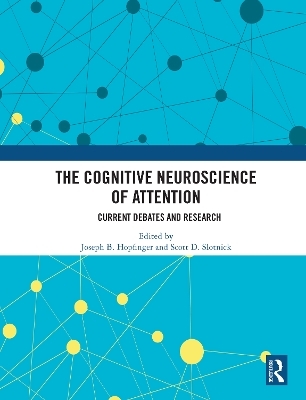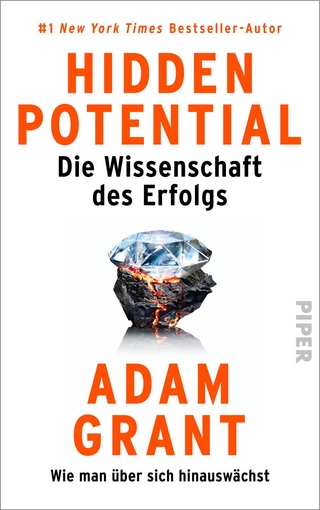
The Cognitive Neuroscience of Attention
Routledge (Verlag)
978-0-367-50126-6 (ISBN)
Attention refers to our ability to selectively process the vast array of stimuli impinging upon our senses at every moment. The mental processes of attention are critical for allowing us to maintain focus and complete tasks efficiently, even within distracting environments. The brain mechanisms of attention have been studied for decades, yet much still remains unknown, and consensus on core issues remains elusive. A unique aspect of this book are chapters that highlight recent debates on critical issues in attention research. Each of these chapters includes a comprehensive discussion paper that is followed by peer commentaries and an authors' responses. These debates include whether attention can modulate activity of even the earliest cortical processing region and whether changes in white matter are critical for plasticity-related effects of attention training. In addition to these discussion chapters, the book presents cutting-edge research on some of the newest theories of attentional control and selective attention, including the influence of practice, epigenetics, reward, social interaction, and distractor suppression. These studies employ advanced cognitive neuroscience methods such as neurostimulation, functional neuroimaging pattern analysis, and the evaluation of oscillatory brain activity to shed light on the brain mechanisms underlying attention.
The chapters in this book were originally published as articles in various issues of the journal Cognitive Neuroscience.
Joseph B. Hopfinger is Professor of Psychology and Neuroscience at the University of North Carolina at Chapel Hill, USA, and Co-Editor-in-Chief of the journal Cognitive Neuroscience. He studies the neural mechanisms of attention and plasticity, using event-related potentials, functional MRI, and transcranial alternating current stimulation. Scott D. Slotnick is Professor of Psychology and Neuroscience at Boston College, USA, Co-Editor-in-Chief of Cognitive Neuroscience, and author of Controversies in Cognitive Neuroscience and Cognitive Neuroscience of Memory. He employs functional magnetic resonance imaging, electroencephalography, and transcranial magnetic stimulation to investigate brain mechanisms underlying memory and attention.
Introduction
Joseph B. Hopfinger & Scott D. Slotnick
Chapter 1. The Earliest Effects of Attention on Cortical Processing: Debate
Does spatial attention modulate the earliest component of the visual evoked potential?
Hannah M. Baumgartner, Christian J. Graulty, Steven A. Hillyard & Michael A. Pitts
A sensory evoked response or precise anticipatory modulation? Mechanisms underlying the reported C1 modulation by spatial attention
Yulong Ding
A controversy of whether the early C1 ERP is affected by attention
Stanley Klein
Modulation of the earliest visual evoked potential by attention: now you see it, now you don’t
Gilles Pourtois, Valentina Rossi, Patrik Vuilleumier & Karsten Rauss
Task dependence of early attention modulation: the plot thickens
Simon P. Kelly & Kieran S. Mohr
How early does attention modulate visual information processing? The importance of experimental protocol and data analysis approach
Heleen A. Slagter, Josipa Alilovic & Simon Van Gaal
Open and cautious towards the "minority view"
Shimin Fu
Does spatial attention modulate the C1 component? The jury continues to deliberate
Hannah M. Baumgartner, Christian J. Graulty, Steven A. Hillyard & Michael A. Pitts
Chapter 2. Parameters That Affect Early Attention Modulation: Debate
The experimental parameters that affect attentional modulation of the ERP C1 component
Scott D. Slotnick
‘Tricks’ for revealing potential attentional modulations on the C1 component
Shimin Fu
Identifying and removing overlaps from adjacent components is important in investigations of C1 modulation by attention
Zhe Qu & Yulong Ding
Endogenous attention to object features modulates the ERP C1 component
Alberto Zani & Alice Mado Proverbio
Still wanted: a reproducible demonstration of a genuine C1 attention effect
Michael A. Pitts & Steven A. Hillyard
Insignificant C1 effects cannot be called ‘marginally significant’
Francesco Di Russo
The spatiotemporal characteristics of the C1 component and its modulation by attention
Kieran S. Mohr & Simon P. Kelly
Several studies with significant C1 attention effects survive critical analysis
Scott D. Slotnick
Chapter 3. Relation of White Matter Changes to Practice-Induced Improvements in Attention: Debate
How changes in white matter might underlie improved reaction time due to practice
Pascale Voelker, Denise Piscopo, Aldis P. Weible, Gary Lynch, Mary K. Rothbart, Michael I. Posner & Cristopher M. Niell
Cognitive enhancement: it’s about time
Heleen A. Slagter, Marlies E. Vissers, Lotte J. Talsma & K. Richard Ridderinkhof
Promises and pitfalls of relating alteration of white matter pathways causing improvement in cognitive performance
Dipanjan Roy & V. S. Chandrasekhar Pammi
Cellular mechanisms of adaptive myelination: bridging the gap between animal studies and human cognition
Helena Bujalka & Ben Emery
Relation of higher-frequency oscillatory activity to white matter changes and to core mechanisms of attention
Joseph B. Hopfinger
Is reaction time an index of white matter connectivity during training?
Shenbing Kuang
Possible neural oscillatory mechanisms underlying learning
Olga Kepinska & Niels O. Schiller
Complex models of white and gray matter integration following training
J. Michael Williams
Training and transfer in aging – is pathway overlap really necessary?
Daniela Aisenberg, Zahira Ziva Cohen & Omer Linkovski
The relationship between functional magnetic resonance imaging activation, diffusion tensor imaging, and training effects
Danielle Farrar & Andrew E. Budson
Reaction time as a stochastic process implemented by functional brain networks
Constantinos I. Siettos & Nikolaos Smyrnis
White matter and reaction time: Reply to commentaries
Pascale Voelker, Denise Piscopo, Aldis P. Weible, Gary Lynch, Mary K. Rothbart, Michael I. Posner & Cristopher M. Niell
Chapter 4. Oscillatory Activity and Spatial Attention
Differential effects of 10-Hz and 40-Hz transcranial alternating current stimulation (tACS) on endogenous versus exogenous attention
Joseph B. Hopfinger, Jonathan Parsons & Flavio Fröhlich
Cross-frequency coupling of alpha oscillatory power to the entrainment rhythm of a spatially attended input stream
Tommy J. Wilson & John J. Foxe
Chapter 5. Value-Based Attentional Priority
Neural correlates of attentional capture by stimuli previously associated with social reward
Andy J. Kim & Brian A. Anderson
Recording brain activity can function as an implied social presence and alter neural connectivity
Benjamin O. Turner, Alan Kingstone, Evan F. Risko, Tyler Santander, Jeanne Li & Michael B. Miller
Reward-based plasticity of spatial priority maps: Exploiting inter-subject variability to probe the underlying neurobiology
Chiara Della Libera, Riccardo Calletti, Jana Eštočinová, Leonardo Chelazzi & Elisa Santandrea
Early retinotopic responses to violations of emotion–location associations may depend on conscious awareness
Laura Herde, Valentina Rossi, Gilles Pourtois & Karsten Rauss
Chapter 6. Feature-Based Attentional Selection and Attentional Inhibition
Continuous and discrete representations of feature-based attentional priority in human frontoparietal network
Mengyuan Gong & Taosheng Liu
Role of the dorsal attention network in distracter suppression based on features
Armien Lanssens, Gloria Pizzamiglio, Dante Mantini & Celine R. Gillebert
Gating by inhibition during top-down control of willed attention
Jesse J. Bengson, Yuelu Liu, Natalia Khodayari & George R. Mangun
Chapter 7. The Effects of Practice and Selection History on Attention
From alternation to repetition: Spatial attention biases contribute to sequential effects in a choice reaction-time task
Jessica J. Green, Thomas M. Spalek & John J. McDonald
Methylation polymorphism influences practice effects in children during attention tasks
Pascale Voelker, Brad E. Sheese, Mary K. Rothbart & Michael I. Posner
Chapter 8. Executive Function and Working Memory
Recovery of information from latent memory stores decreases over time
Asal Nouri & Edward F. Ester
Task goals modulate the activation of part-based versus object-based representations in visual working memory
Cody W. McCants, Tobias Katus & Martin Eimer
| Erscheinungsdatum | 08.03.2022 |
|---|---|
| Verlagsort | London |
| Sprache | englisch |
| Maße | 210 x 280 mm |
| Gewicht | 843 g |
| Themenwelt | Geisteswissenschaften ► Psychologie ► Allgemeine Psychologie |
| Geisteswissenschaften ► Psychologie ► Verhaltenstherapie | |
| Naturwissenschaften ► Biologie ► Humanbiologie | |
| Naturwissenschaften ► Biologie ► Zoologie | |
| ISBN-10 | 0-367-50126-0 / 0367501260 |
| ISBN-13 | 978-0-367-50126-6 / 9780367501266 |
| Zustand | Neuware |
| Informationen gemäß Produktsicherheitsverordnung (GPSR) | |
| Haben Sie eine Frage zum Produkt? |
aus dem Bereich


